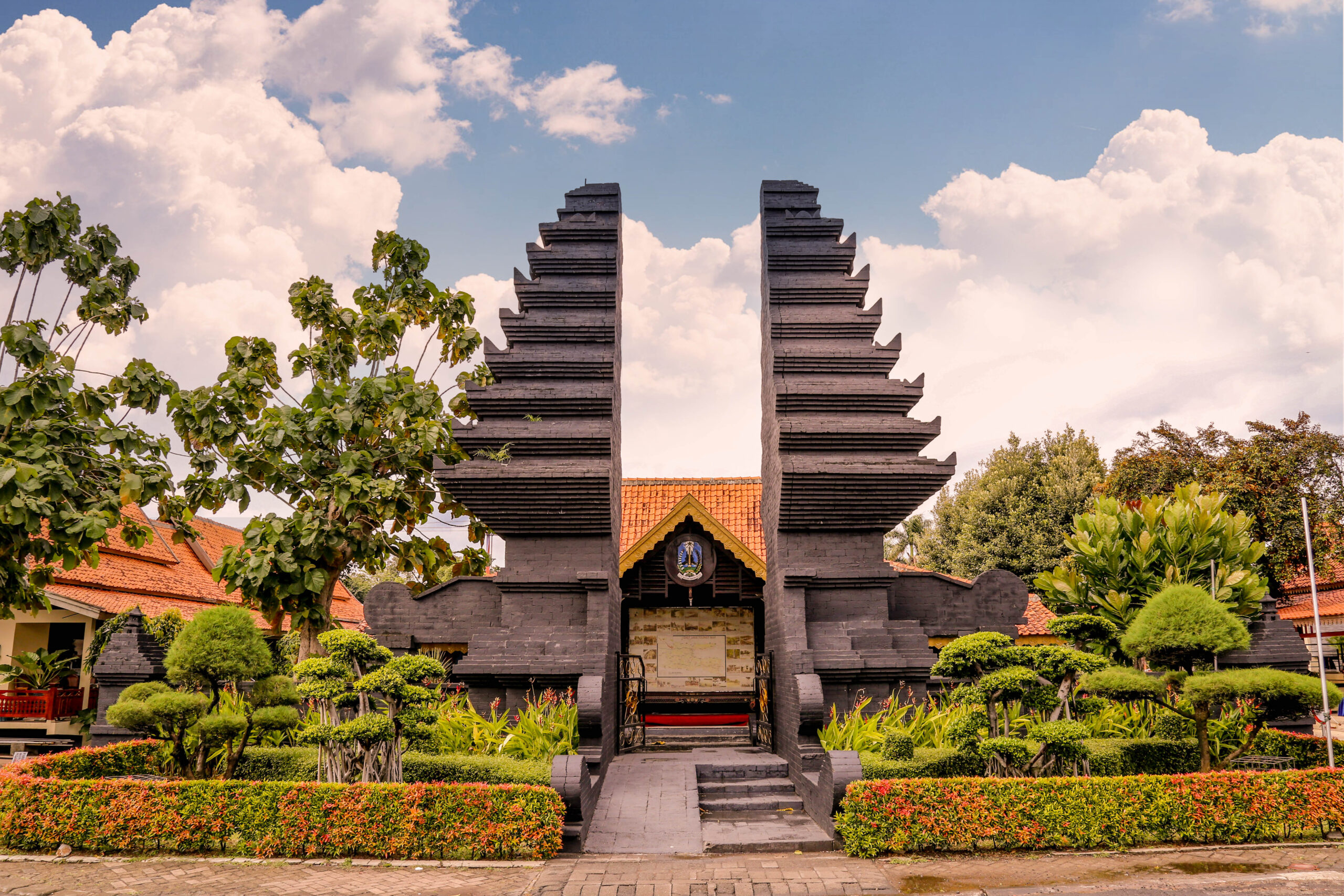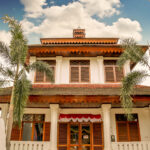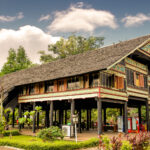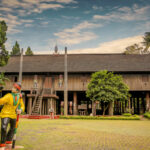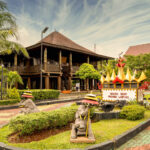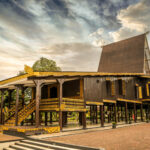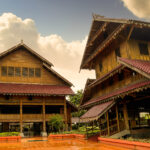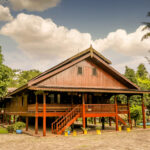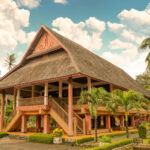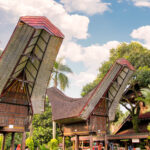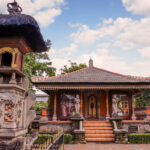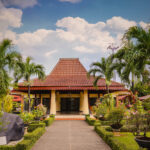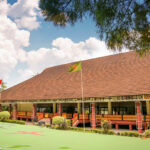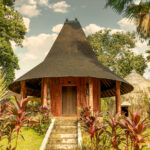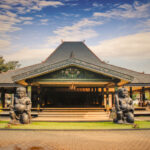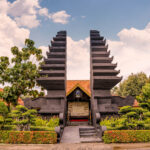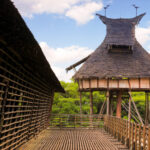Yok dolan, rek!
The largest Hindu-Buddhist kingdom in the archipelago, Majapahit, etched its legacy into the fertile land of East Java. According to legend, the descendants of Majapahit who were displaced during the spread of Islam in Java gave rise to the Tengger community, who now reside in the mountains of Bromo.
At the East Java Pavilion in TMII, two statues named Kotbuto and Angkobuto greet visitors at the entrance. A grand temple complex called Penataran from Blitar is showcased here in its actual size, adorned with a statue of Ganesha, symbolizing strength and wisdom in Hindu mythology. Stories of the Majapahit kingdom’s glory can be traced through the reliefs of “The Coronation of Raden Wijaya” as the first king of Majapahit and the famous “Palapa Oath” scene. Also featured is a statue of Karapan Sapi, the traditional bull racing from Madura, presented against a backdrop of northern limestone hills.
A tall, ten-sided pointed monument with eleven segments also rises here. This replica of Surabaya’s Heroes Monument is built to a 1:15 scale. Surrounding the monument is the Patriot of Bambu Runcing statue, narrating a piece of the nation’s past. Additionally, a dramatic relief of the “Battle of November 10, 1945” depicts key moments such as the tearing of the red-white-blue flag and the destruction of the colonial outpost, which now stands as the actual location of the Heroes Monument in front of the Governor’s Office in Surabaya.
Among the traditional houses on display is the village head’s house, complete with a pendhapa and kentongan, inspired by the regions of Ponorogo and Pacitan. The entire building was relocated intact to TMII to preserve its traditional authenticity.
There are also traditional Madurese houses representing the uniqueness of Sumenep, Pamekasan, Bangkalan, and Situbondo. The diversity is further reflected through the Langgar, a small prayer house rich in spiritual value; the Pir, a traditional transport vehicle from Bangkalan; the fishing boats that sail the seas; and the Pagupon, used for keeping pigeons. The natural wealth of East Java is also reflected in this pavilion, with native trees such as maja, sugar apple, gading coconut, sawo kecik, mango, and teak wood adding life to the space.
DID YOU KNOW?
East Java plays a significant role in the spread of Islam across Java. Islamic scholars known as Wali Sanga left their mark in this land. Some of them include Sunan Bonang, Sunan Ampel, Sunan Giri, and Sunan Drajat. At TMII, visitors can find a replica of the Ampel Mosque Tower, which serves as a legendary symbol of these figures’ presence in East Java.

